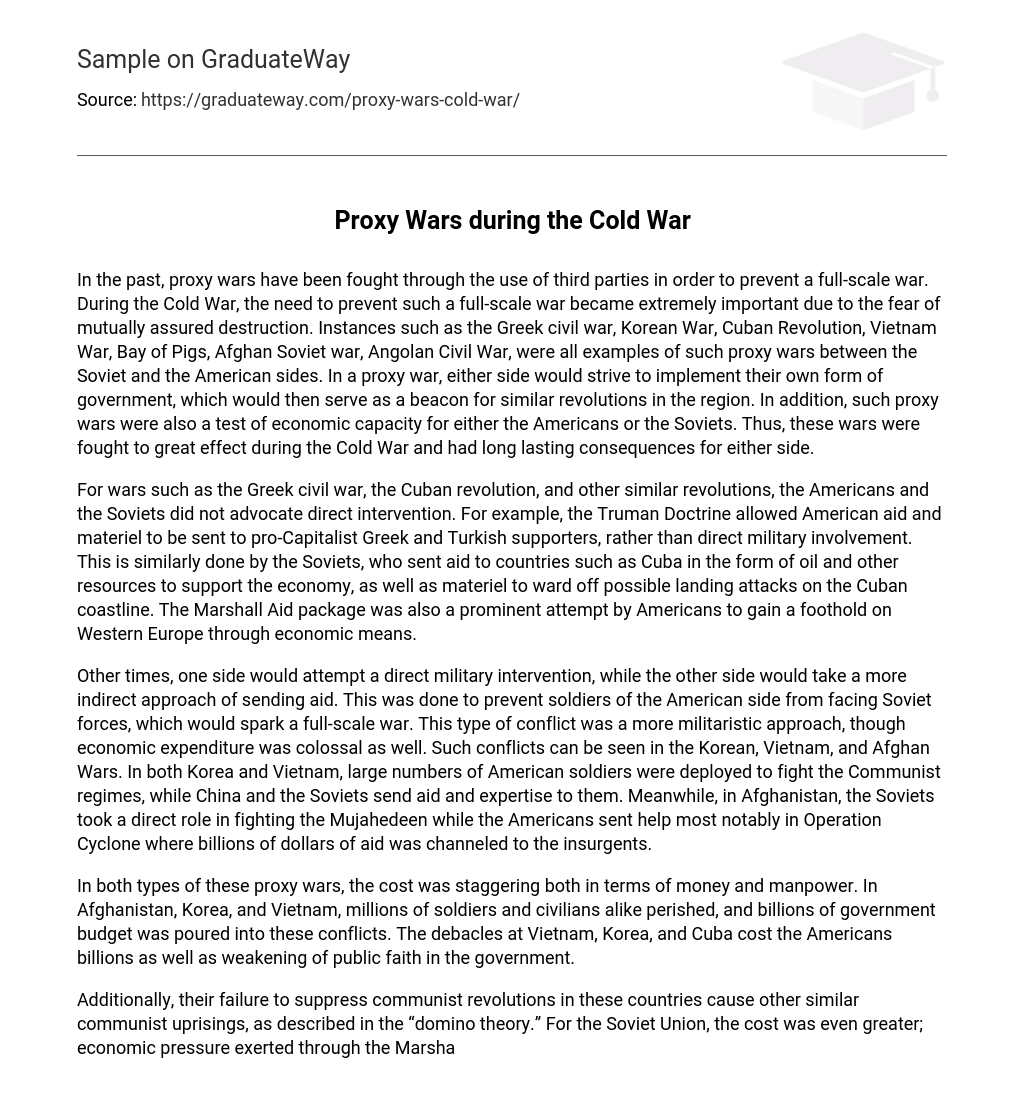During the Cold War, proxy wars were fought using third parties to prevent full-scale war. The fear of mutually assured destruction made it crucial to avoid such conflicts. Examples of proxy wars between the Soviet and American sides include the Greek civil war, Korean War, Cuban Revolution, Vietnam War, Bay of Pigs, Afghan Soviet war, and Angolan Civil War. Each side aimed to establish its own form of government as a model for future revolutions in the region. Furthermore, these wars served as tests of economic capacity for both the Americans and Soviets. Ultimately, these Cold War proxy wars had significant and lasting consequences for both sides.
The Americans and Soviets refrained from directly intervening in wars like the Greek civil war and the Cuban revolution. The Truman Doctrine allowed the US to provide assistance and supplies to pro-Capitalist supporters in Greece and Turkey, without direct military involvement. Similarly, the Soviets aided countries like Cuba by supplying resources and oil to support their economy and providing materiel to defend against potential coastal attacks. The Marshall Aid package was another significant effort by the US to establish influence in Western Europe through economic means.
During certain periods, one side would opt for a direct military intervention while the other side adopted an indirect approach by providing aid. The intention behind this was to prevent American soldiers from encountering Soviet forces directly, as that could potentially trigger a full-scale war. These conflicts followed a more militaristic strategy and involved substantial economic expenditure. Instances of such conflicts can be seen in the Korean, Vietnam, and Afghan Wars. In both Korea and Vietnam, the United States deployed a considerable number of soldiers to combat Communist regimes, while China and the Soviets extended assistance and expertise to them. Meanwhile, in Afghanistan, the Soviets engaged directly in fighting against the Mujahedeen while Americans supported them through initiatives like Operation Cyclone. This initiative channeled billions of dollars’ worth of aid to insurgents.
Both types of proxy wars were incredibly costly in terms of money and manpower. In Afghanistan, Korea, and Vietnam, numerous soldiers and civilians perished, while the government allocated billions of dollars towards these conflicts. The disastrous consequences in Vietnam, Korea, and Cuba not only led to financial losses for Americans but also undermined public confidence in the government.
In addition, the inability of the United States to prevent communist revolutions in these nations resulted in further uprisings influenced by the “domino theory”. As a consequence, this had a significant detrimental impact on the Soviet Union as the economic strain from the Marshall Plan weakened its satellite states’ allegiance. Simultaneously, difficulties such as the Soviet-Afghan War severely harmed an already fragile Soviet economy.
Proxy wars were a strategic tactic used by the Soviet Union and the United States during the Cold War. By engaging in these conflicts, both countries could prevent larger, more devastating wars from occurring. This method allowed them to utilize their military forces and economies to fight each other, ultimately leading to the downfall of the Soviet Union.





